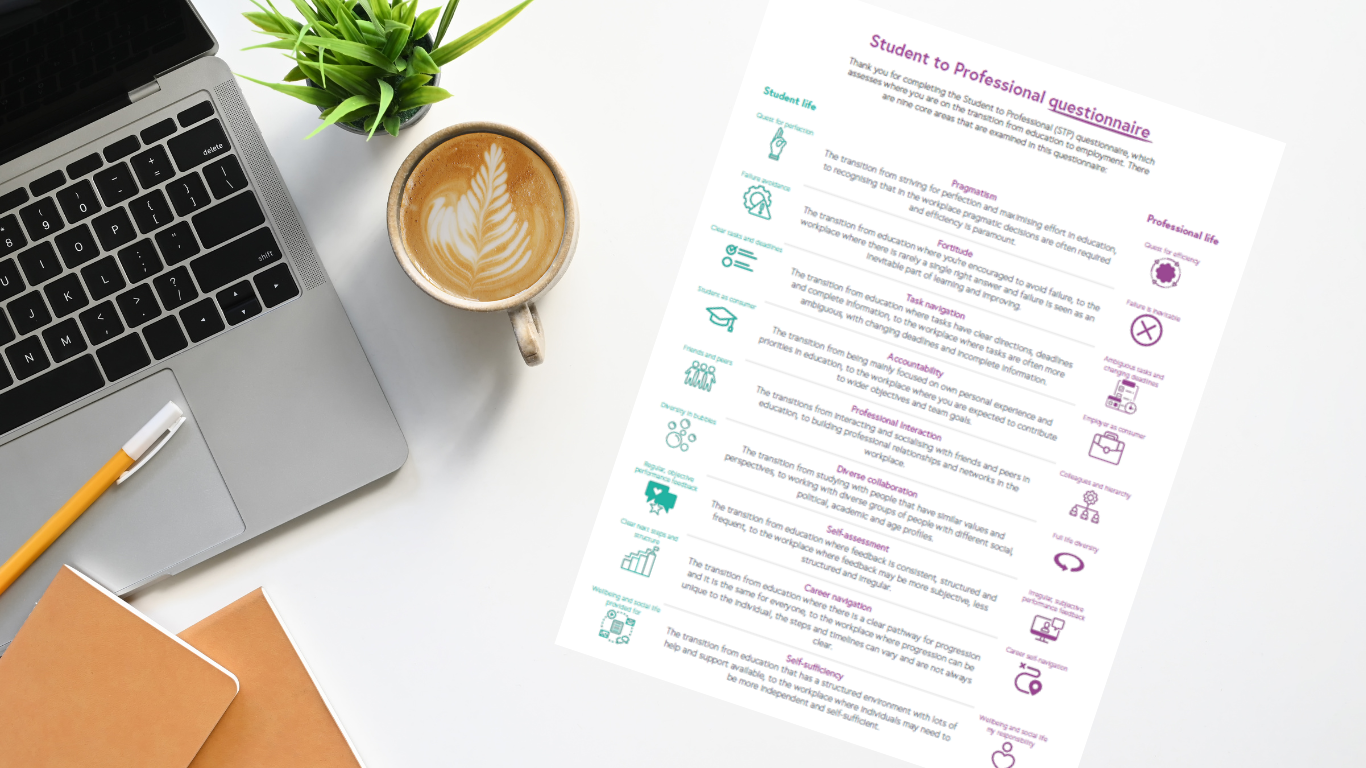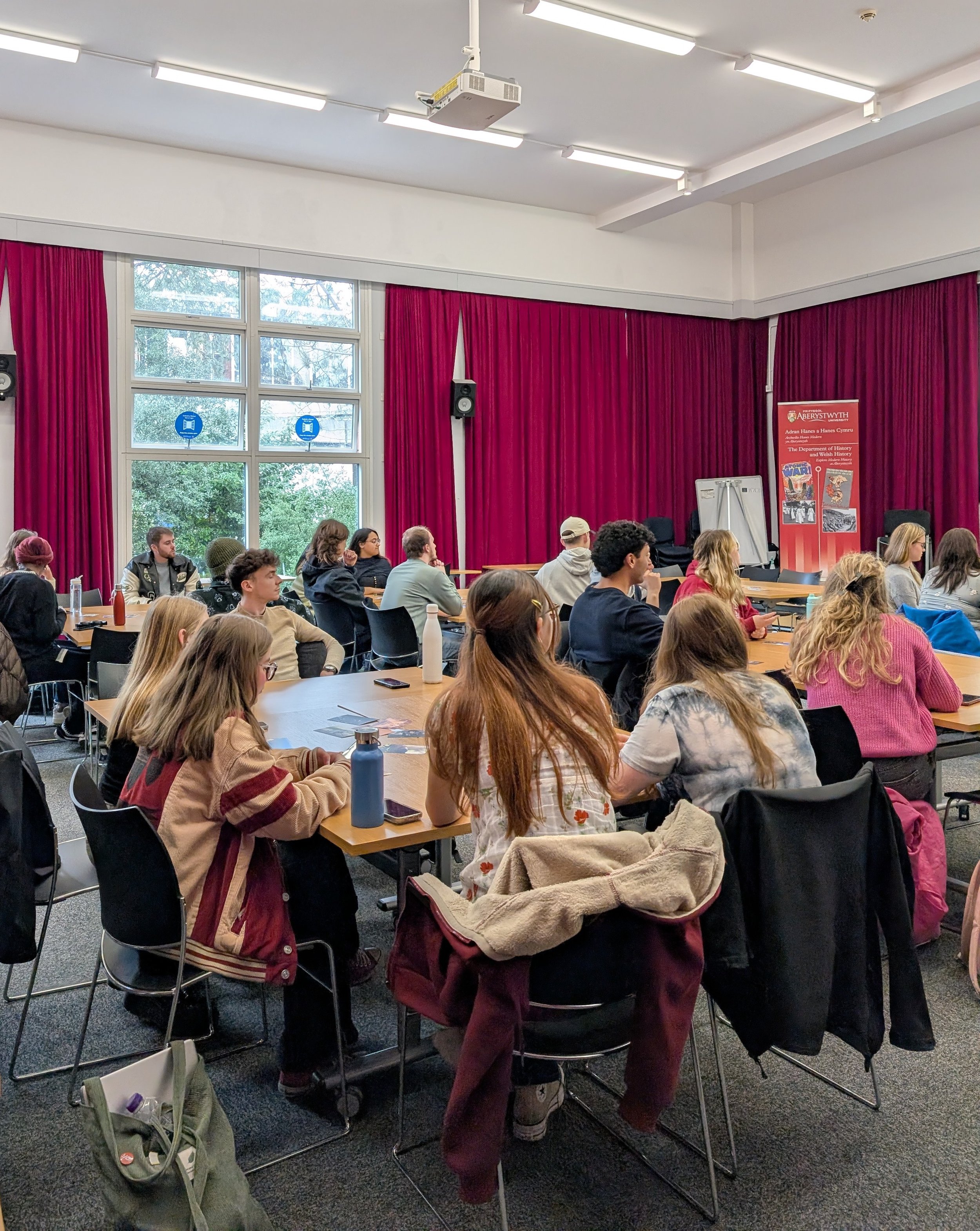Demystifying the transition from student to professional
Through applied research, psychometrics and professional development
What is the STP transition?
As we adapt from a learning environment to an employment one, the mindset and behaviours required of us change. Much of what has helped us to be successful in education will no longer serve us well at work. We need to transition from being a student to professional.
Until now that transition has been undefined and opaque to many - particularly those students who come from more diverse backgrounds.
Why is the gap widening?
-
The rise of perfectionism as a behavioural trait
Social media presenting unrealistic expectations about the world of work
Reduced work and life experiences during formative years due to COVID
The success of widening participation and social mobility efforts - meaning more students from more diverse backgrounds are entering university life and professions
The focus on ‘authenticity’ or ‘bringing your whole self to work’, which has worked well for diversity but less well to set people up for a significant shift
The significant changes in student experience in education, raising student expectations of support, flexibility and personalisation in work
-
The transition from student to professional has always required a significant shift in mindset and behaviours. However, in recent years, the gap between student and professional behaviours appears to be widening. We want to solve this problem and enable students, early careers professionals, and all those who support their development, to more easily, rapidly and successfully navigate the transition.
-
You can find out more about our full research methodology and study on our STP research page here. Rather than focus on the binary state of ‘work-ready’ or not, we have conceptualised STP as a transitional (or liminal) state, which everyone navigates at the start of their career. We have mapped the psychological shifts in mindset and behaviour that enable a successful transition into the world of work. This enables individuals and those supporting them to validate, normalise, demystify and support the shifts required. We have adopted an evidence-based, research informed approach, led by early careers experts and occupational psychologists, to objectively map and model this STP shift. Our pilot involved 1,000 participants across 15 organisations.
Coverage of the STP
Some of our pilot partners include
























